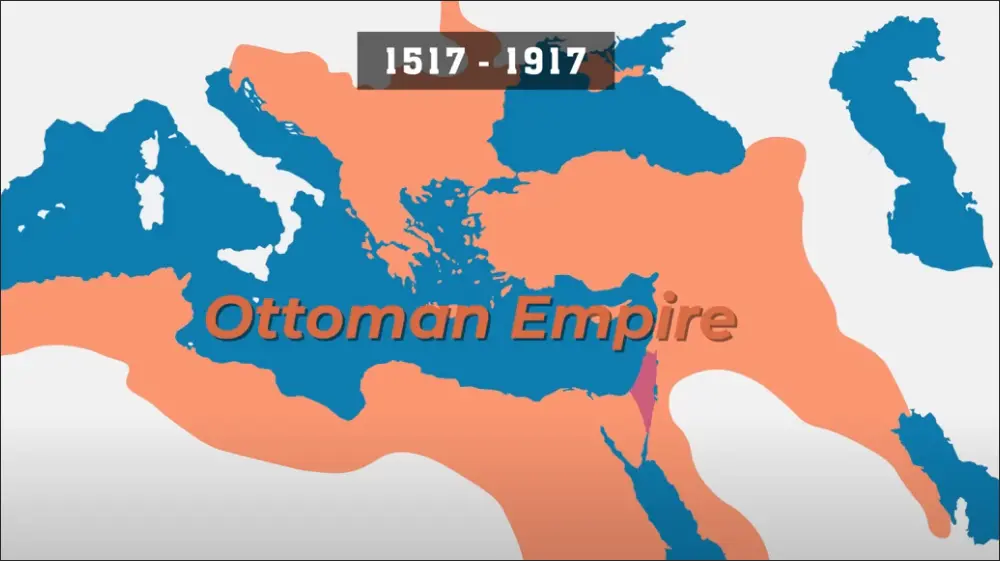The Arab Revolt Against the Ottoman Empire and the Sykes-Picot Betrayal: How Arabs Were Deceived by the British and French
Throughout the early 20th century, the Middle East was undergoing dramatic political shifts. Arab leaders, longing for independence, saw an opportunity to break free from the Ottoman Empire, which had ruled large swaths of the Arab world for centuries. With the outbreak of World War I, the Arab nationalists believed that aligning with Britain and France against the Ottoman Empire would finally result in the creation of a united Arab state. However, their aspirations would be crushed by the infamous Sykes-Picot Agreement of 1916—a secret deal between Britain and France that divided the Arab lands into spheres of influence for the two European powers. The agreement not only denied Arab independence but also laid the foundation for many of the political issues that continue to plague the Middle East today.
The Arab Revolt: A Quest for Independence
By the early 20th century, many Arabs were growing increasingly disillusioned with Ottoman rule. The Ottoman Empire, once powerful, had weakened considerably and had lost its grip on its far-flung territories. Arab nationalist movements were gaining momentum, calling for independence and the establishment of an Arab state that would encompass much of the Levant, Mesopotamia, and the Arabian Peninsula. Many Arabs felt a deep cultural and religious tie to these lands and thought they deserved self-governance, free from Turkish control. Interestingly, the Turks already had the coveted “Caliphate” that Muslims are always chasing, but they weren’t Arabs.
When World War I broke out in 1914, the Ottoman Empire sided with the Central Powers (Germany, Austria-Hungary, and others) against the Allied Powers (Britain, France, Russia, and later the United States). The war presented the Arabs with an opportunity. Sharif Hussein bin Ali, the Emir of Mecca and leader of the Hashemite family, was approached by British officials with a proposal: if the Arabs would rebel against the Ottomans, Britain would support the creation of an independent Arab state after the war. This promise was enshrined in a series of letters between Hussein and Sir Henry McMahon, the British High Commissioner in Egypt. These communications became known as the Hussein-McMahon Correspondence.
Hussein-McMahon Correspondence: A Hopeful Beginning
In 1915 and 1916, Sharif Hussein corresponded with McMahon, discussing the terms of an alliance. Hussein agreed to launch a revolt against the Ottoman Empire in exchange for British support for an independent Arab state. The borders of this proposed state would include the entire Arabian Peninsula, parts of the Levant (modern-day Syria, Lebanon, Jordan, and Israel/Palestine), and Mesopotamia (modern-day Iraq).
You may be interested
On June 10, 1916, Hussein officially declared the Arab Revolt. Arab forces, with the assistance of British military officers such as T.E. Lawrence (famously known as Lawrence of Arabia), began military operations against the Ottomans. The revolt was initially slow to gain momentum, but it soon succeeded in capturing key Ottoman-held cities, including Aqaba and Damascus.
For the Arabs, the future seemed promising. They believed their contributions to the Allied war effort would earn them the right to self-determination and the creation of an independent Arab state. What they didn’t know, however, was that Britain and France had already made secret plans to divide the Arab territories among themselves.
The Sykes-Picot Agreement: A Secret Betrayal
While Sharif Hussein and the Arabs were fighting for their independence, British and French diplomats were engaged in secret negotiations to carve up the Middle East for their own benefit. In 1916, Sir Mark Sykes of Britain and François Georges-Picot of France signed what became known as the Sykes-Picot Agreement. This secret agreement divided the Ottoman Empire’s Arab lands into zones of British and French influence, directly contradicting the promises made to the Arabs.
The Terms of the Agreement
Under the Sykes-Picot Agreement, the Middle East was divided into several zones:
- Zone A (French Control): France would control what is now Syria and Lebanon, as well as parts of southern Turkey.
- Zone B (British Control): Britain would take control of Mesopotamia (modern-day Iraq) and parts of Palestine and Jordan.
- Zone C (International Administration): Palestine, including Jerusalem, was to be placed under international administration due to its religious significance to Christians, Muslims, and Jews.
- Zone D (Influence): Both Britain and France would have “spheres of influence” in areas that were not directly governed by them but where they would have significant political and economic control.
The agreement blatantly ignored Arab aspirations for independence. Instead, it ensured that the post-war Middle East would be dominated by British and French colonial interests. The Arabs who had fought alongside the Allies in good faith were effectively sold out by their supposed partners.
The Revelation of the Agreement
The Sykes-Picot Agreement was not made public until after the war, when it was revealed by the Bolshevik government in Russia, which had gained access to the secret treaty after the Russian Revolution. When the Arabs learned of the agreement, they felt deeply betrayed. The British, attempting to soothe Arab anger, argued that the agreement had been revised and that Arab independence was still a possibility. However, the damage was done, and it was clear that Britain and France intended to maintain control over the region.
The Aftermath: Arab Disillusionment and the Mandate System
At the end of World War I, the Ottoman Empire was defeated, and its Arab territories were up for grabs. However, rather than granting the Arabs their promised independence, the victorious Allies implemented the Mandate System, which placed former Ottoman territories under the control of European powers, with Britain and France receiving mandates over the Arab lands.
- Britain was awarded mandates over Palestine, Transjordan (modern-day Jordan), and Iraq.
- France received mandates over Syria and Lebanon.
The mandates were essentially thinly-veiled colonies, with the British and French exercising full control over the political and economic affairs of these regions. Arab hopes for independence were shattered. In Iraq and Syria, nationalist uprisings against the British and French mandates broke out, but these were brutally suppressed.
The Creation of Borders
One of the most significant legacies of the Sykes-Picot Agreement was the creation of artificial borders that divided the Arab world into separate nation-states. These borders were drawn with little regard for the ethnic, religious, and tribal dynamics of the region. For example, Iraq was created by merging three Ottoman provinces (Mosul, Baghdad, and Basra) that had little in common culturally or historically. The result was a volatile mix of Sunni Arabs, Shia Arabs, and Kurds, leading to long-term instability.
Similarly, Syria and Lebanon were drawn in a way that reflected French interests rather than the realities on the ground. Lebanon, for example, was created with a large Christian population to ensure French influence, but it also included a significant Muslim population, setting the stage for future sectarian conflicts.
The Long-Term Consequences of the Sykes-Picot Agreement
The betrayal of the Arabs by Britain and France had profound and long-lasting consequences. The arbitrary borders drawn by the Sykes-Picot Agreement and the imposition of European mandates sowed the seeds of future conflicts in the Middle East. Many of the modern-day problems in the region, including the Israeli-Palestinian conflict, the civil wars in Syria and Iraq, and the rise of extremist groups, can trace their origins back to the post-World War I agreements.
Arab Nationalism and Anti-Colonial Movements
The disillusionment felt by Arabs after the Sykes-Picot Agreement and the implementation of the mandate system fueled the growth of Arab nationalism. Throughout the 20th century, various movements emerged that sought to unify the Arab world and throw off the yoke of Western imperialism. Leaders like Egypt’s Gamal Abdel Nasser and the Ba’ath Party in Iraq and Syria sought to create a united Arab state, but these efforts were ultimately unsuccessful due to regional rivalries and foreign intervention.
Legacy of Division
The Sykes-Picot Agreement is often cited as a symbol of Western imperialism and the betrayal of Arab aspirations. It left a lasting legacy of division and instability in the Middle East. The borders drawn by the agreement remain in place today, but they continue to be a source of tension and conflict. In recent years, groups like ISIS have explicitly called for the dismantling of the Sykes-Picot borders, viewing them as illegitimate and a symbol of foreign domination.
Conclusion: A Broken Promise
The story of the Arab Revolt and the Sykes-Picot Agreement is one of betrayal and broken promises. The Arabs who fought against the Ottoman Empire were deceived by the British and French, who had no intention of allowing them to govern themselves. Instead, the Middle East was carved up into spheres of influence, with Britain and France taking control of the region’s most valuable territories. The arbitrary borders drawn by the Sykes-Picot Agreement and the imposition of colonial mandates created the conditions for many of the conflicts that continue to plague the region to this day.
The legacy of this betrayal is a reminder of the dangers of foreign intervention and the importance of respecting the aspirations of the people in the region. For the Arabs, nationalism and tribalism was a cruel outcome, one that would continue to haunt the Middle East now and for generations to come.
It seems they haven’t learned their lesson. The example of the disbelievers ˹not responding to the Messenger’s warning˺ is like a flock not comprehending the calls and cries of the shepherd. ˹They are wilfully˺ deaf, dumb and blind so they have no understanding. (Qur’aan 2:171)








